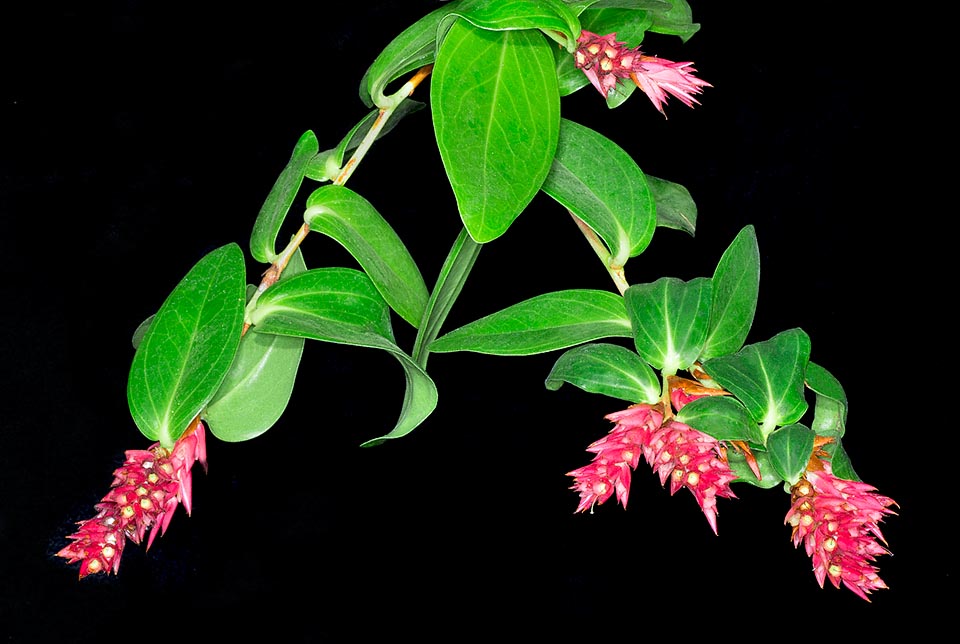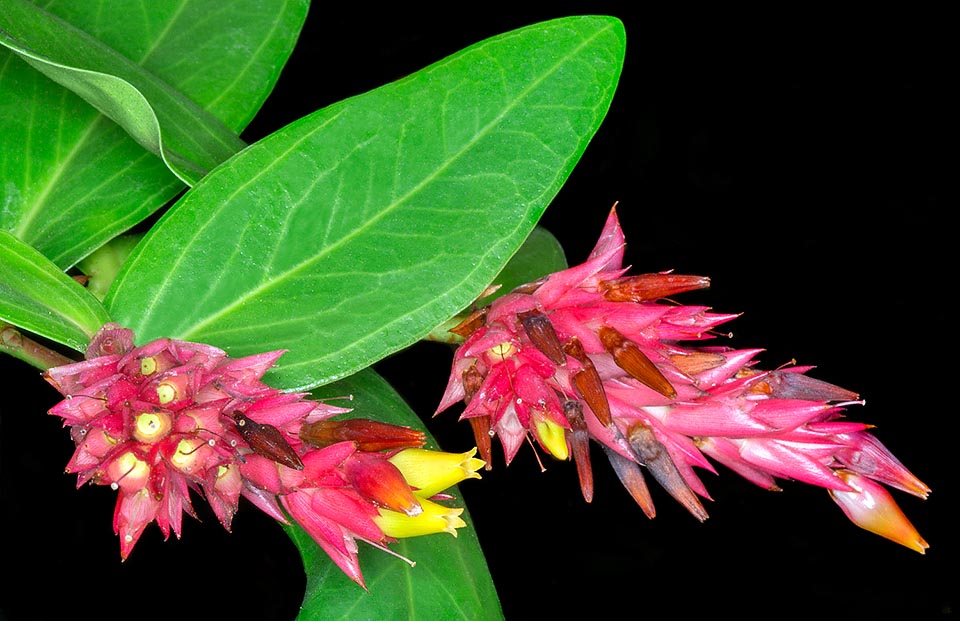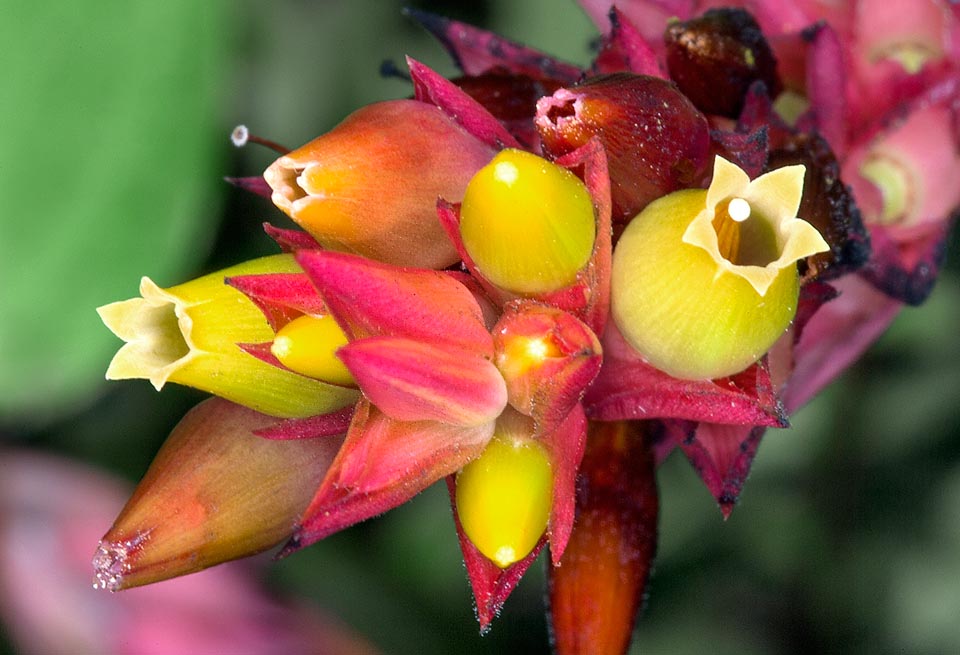Family : Ericaceae

Text © Pietro Puccio

English translation by Mario Beltramini

To be able to admire the splendid Cavendishia allenii, a heath well differing in its soft elegance, style “Belle Époque”, from our shrivelled and prickly Alpine heaths, it is necessary to go to Panama, and look with attention among the branches of the trees growing in the local moist forests between 200 and 1500 m of altitude © G. Mazza
The species is native to Panama where it lives on the trees of the humid forests between 200 and 1500 m of altitude.
The genus is honoured to Lord William George Spencer Cavendish, 6th Duke of Devonshire (1790-1858), who was president of the Royal Horticultural Society of London; the species is dedicated to the American botanist Paul Hamilton Allen (1911-1963) who discovered it in Panama and collected some samples of the same.
The Cavendishia allenii A.C.Sm. (1941) is an epiphytic shrub, up to about 1 m tall, with brown-greyish branches more or less hanging. Subsessile alternate leaves, simple, ovate-elliptic with obtuse or acute apex, entire margin and prominent median vein below, coriaceous, of semi-glossy intense green colour above, paler and more opaque below, 5-11 cm long and 3-7 cm broad.

In fact, it is an epiphyte shrub, rarely cultivated, even 1 m tall, with ovate-elliptic leaves, bright green, and often pendulous branches with flamboyant inflorescences © Giuseppe Mazza
Axillar compact racemose inflorescences, 3-6 cm long, formed by floral bracts ovate-elliptic with acute apex and entire margin, concave, chartaceous, pink to red, striate, 1,5-2 cm long and 1-1,5 cm broad, long persistent, that subtend the flowers; the pedicel, 1-2 mm long, is provided of two bracteoles similar to bracts, but smaller, that wrap the calyx.
Flowers with calyx persistent in fruit, 0,8-1,2 cm long, of pink colour, with 5 triangular lobes, and urceulate corolla, 1,2-1,6 cm long and of about 0,4 cm of diameter, with 5 oblong-triangular lobes, of pale green colour tending to yellow or yellow orange towards the apex, striate. The fruits are subglobose berries, of 1,5 cm of diameter, of blue colour, containing several ovoid seeds about 1 mm long.
It reproduces by seed just interred in draining loam, rich of organic substance, maintained humid at the temperature of 24-28 °C.

The great pointed bracts, pink or red, subtend yellow tiny flowers, protected by bracteoles similar, but smaller, that wrap the calyx. Its cultivation is not easy © G. Mazza
Rarely cultivated, it would deserve a greater diffusion due to its ornamental foliage and the coloured inflorescences, utilizable in open spaces exclusively in the tropical and humid subtropical regions, as epiphyte on the trees or in pots or baskets preferably suspended, utilizing an organic loam with addition of inerts to improve the drainage and the aeration of the roots, in solar filtred light or slight shade.
Elsewhere it is to be placed in a protected environment particularly luminous with high humidity, 65-80 %, medium-high temperatures, with winter lowest ones not under the 15 °C, and constant ventilation. Regular and abundant watering in presence of high temperatures, but without stagnations, more spaced, allowing the superficial layer of the loam to dry up before giving water again, in winter.
→ To appreciate the biodiversity within the ERICACEAE family please click here.
